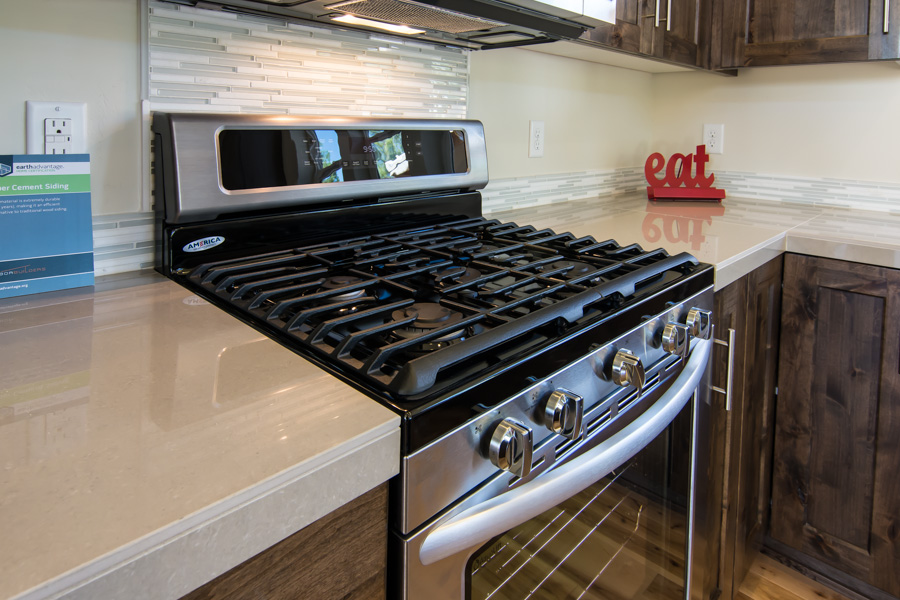One of the many benefits of buying a new home is its increased energy efficiency. Builders are using the latest technologies to reduce household energy consumption, from improved insulation to energy-efficient appliances.
Recent analysis by the National Association of Home Builders (NAHB) shows that, on a per- square-foot basis, the newer a single-family home is, the less energy it uses. New homes built today, even if they are larger, can have a higher energy efficiency than homes built prior to 1950. As home trends are pointing toward building smaller homes, that efficiency gap gets even larger between existing and new homes!
Yet, the energy-efficiency story doesn’t end with the builder – it simply starts there. To realize the greatest efficiency savings, homeowners also must do their part to use energy wisely.
In fact, even though new homes are built to be more efficient, true energy savings will depend on household behavior. That’s because the size of your household and the number of energy-guzzling appliances and electronic gadgets that you use actually have the greatest impact on your electric bill.
Understanding Your Home’s Electricity Usage
To make smart choices about your home’s electricity usage, it’s important to understand how homes typically use energy. The amount of energy used to heat and cool a home is known as heating, ventilation and air conditioning – or HVAC. Builders generally have a greater influence on the efficiency of a home’s HVAC system as a home is designed and built. In fact, more efficient HVAC equipment installed by builders – and better insulation and sealing – is a key reason for the greater efficiency of new homes.
Research the HVAC & water heating systems being installed in new homes to see what fits with your needs & desires for energy usage. There are plenty of alternative HVAC systems, such as ductless heat pumps as well as alternatives to generic water heaters that could end up saving on energy usage.
However, non-HVAC electricity – energy used for things like watching television, charging electronic devices, and using a computer – accounts for more than 70% of a home’s total energy use. That means that most of the energy that a home uses will be based upon the behavior of the household and not the design or construction of the home.
NAHB also analyzed the impact of products usually purchased by a household on overall energy consumption, including an extra freezer, a third television, a home theater connected to a TV and a dehumidifier. The electricity needed to power these products accounted for about twice the amount of electricity required by items usually installed by a builder (e.g., ceiling fans, refrigerator and water heater).

Making Wise Energy Choices
The choices you make everyday about your electricity usage have the most significant impact on your new home’s overall energy consumption. And whether you live in a new or previously-owned home, you have the power to make it even more energy efficient.
Here are a few simple no- or low-cost tips to improve your home’s efficiency:
Lighting: One of the easiest ways to save electricity is to install compact fluorescent or LED light bulbs both inside and outside your house. This is especially important if you have an outdoor light that remains on overnight. As well, start turning off lights in rooms that you are not using.
Electronic Products: With homes using an ever-increasing number of electronic products, it’s important to turn them off when they’re not in use. This includes TVs and computers! To help save the standby power often wasted with these devices, use a power strip to turn off equipment not being used. And don’t forget to unplug small appliances and chargers when they’re not in use or if the electronic device is fully charged. These unused appliances and chargers remain in standby mode and use electricity.
Appliances: Use your dishwasher and washing machine only with full loads. And, use large appliances in the early morning and late evening, when demand for energy is not as high. If possible, only use cold water to wash & rinse laundry.
Programmable Thermostat: Consider installing a programmable thermostat, which can automatically adjust the temperature of your home when you’re away at work or asleep at night. Even small temperature adjustments can add up to big energy savings.
Solar Options: Look into solar options for your home, including solar electric and solar water heating. These systems can be more affordable than you may think, especially with current rebates provided. Check out our blog on the process of installing solar panels at our office here at Arbor Builders – Solar Panels: Getting Access to Solar Energy.
Landscaping: When you’re creating your landscape plan, research which plants are native & require low watering. This will make a big difference with how much water you use during the growing season. Xeriscaping can be a very stylish and creative yet efficient way to landscape around your home. Explore ways to reduce your need for supplemental watering.
If you aren’t buying a new home, explore ways to weatherproof your home and use your current appliances more efficiently. For example, make sure that the weather stripping on your doors is sufficient to prevent drafts. Caulk small holes & cracks around vents, ducts, pipes, etc. Install low water-use shower heads and faucets. See more low cost energy efficiency tips here: http://energytrust.org/residential/homeowners/no-cost-low-cost-tips.
Energy efficiency goes beyond the home build, it is carried on through homeowners’ usage and the choice to make “going green” more of a lifestyle than a trend. Let’s work together to build an even more efficient future!
For more energy-efficiency tips for your home, visit nahb.org/forconsumers.
To access the NAHB study, How Much Energy Homes Use and Why, visit HousingEconomics.com.
Source: National Association of Home Builders – http://www.nahb.org




